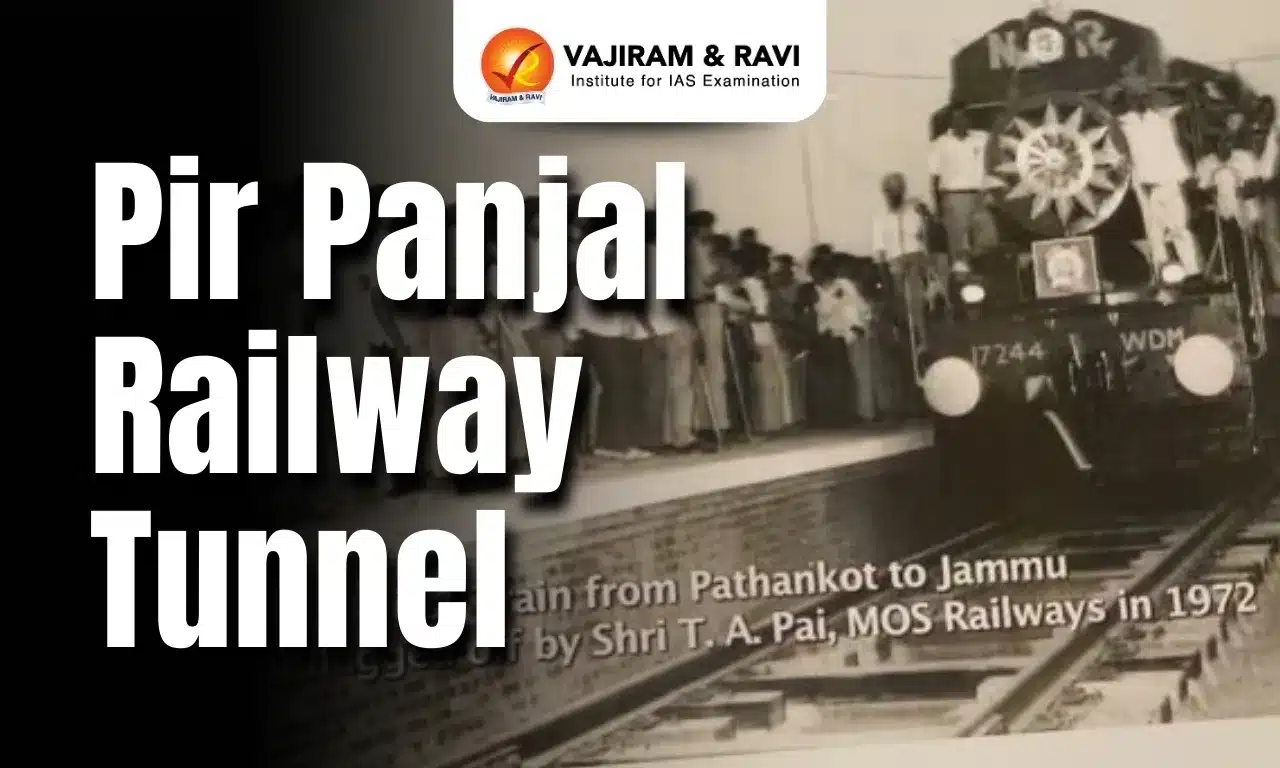Pir Panjal Railway Tunnel Latest News
The Udhampur-Srinagar-Baramulla Rail Link (USBRL) is a historic infrastructure project enhancing Jammu & Kashmir’s connectivity with mainland India. Its completion, marked by the Katra–Sangaldan section, ensures year-round, faster rail access to the Kashmir Valley.
About Pir Panjal Railway Tunnel
- The Pir Panjal Railway Tunnel, also known as the Banihal Railway Tunnel, is currently India’s longest transportation railway tunnel, measuring 11.2 kilometres in length.
- It is part of the Udhampur–Srinagar–Baramulla Rail Link (USBRL) and connects Quazigund in the Kashmir Valley with Banihal in Jammu, passing under the Pir Panjal mountain range.
- It is the only broad-gauge mountain railway tunnel in the country and part of the USBRL’s 202-km core segment.
- The Pir Panjal Range, part of the Lesser Himalayas, spans across Himachal Pradesh and Jammu & Kashmir.
- Key peaks: Notable peaks include Indrasan (6,221 m) and Deo Tibba (6,001 m).
- Hydrological significance: It separates the Beas and Ravi Rivers from the Chenab River and is the origin zone for tributaries of the Jhelum and Indus Rivers.
- Strategic passes:
- The Mughal Road traverses the Pir Panjal Pass (3,490 m) to link Poonch and Rajouri with Srinagar.
- The Jawahar Tunnel (2.5 km) under Banihal Pass connects Banihal to Qazigund.
- Tourism and History: The region hosts famous destinations like Gulmarg, and was historically an ancient trade route connecting Kashmir with mainland India.
Source: IE
Last updated on June, 2025
→ UPSC Notification 2025 was released on 22nd January 2025.
→ UPSC Prelims Result 2025 is out now for the CSE held on 25 May 2025.
→ UPSC Prelims Question Paper 2025 and Unofficial Prelims Answer Key 2025 are available now.
→ UPSC Calendar 2026 is released on 15th May, 2025.
→ The UPSC Vacancy 2025 were released 1129, out of which 979 were for UPSC CSE and remaining 150 are for UPSC IFoS.
→ UPSC Mains 2025 will be conducted on 22nd August 2025.
→ UPSC Prelims 2026 will be conducted on 24th May, 2026 & UPSC Mains 2026 will be conducted on 21st August 2026.
→ The UPSC Selection Process is of 3 stages-Prelims, Mains and Interview.
→ UPSC Result 2024 is released with latest UPSC Marksheet 2024. Check Now!
→ UPSC Toppers List 2024 is released now. Shakti Dubey is UPSC AIR 1 2024 Topper.
→ Also check Best IAS Coaching in Delhi
Pir Panjal Railway Tunnel FAQs
Q1. What is the Pir Panjal Railway Tunnel?+
Q2. How long is the Pir Panjal Tunnel?+
Q3. Why is the Pir Panjal Tunnel significant?+
Tags: Pir Panjal Railway Tunnel Prelims Pointers upsc prelims current affairs
























